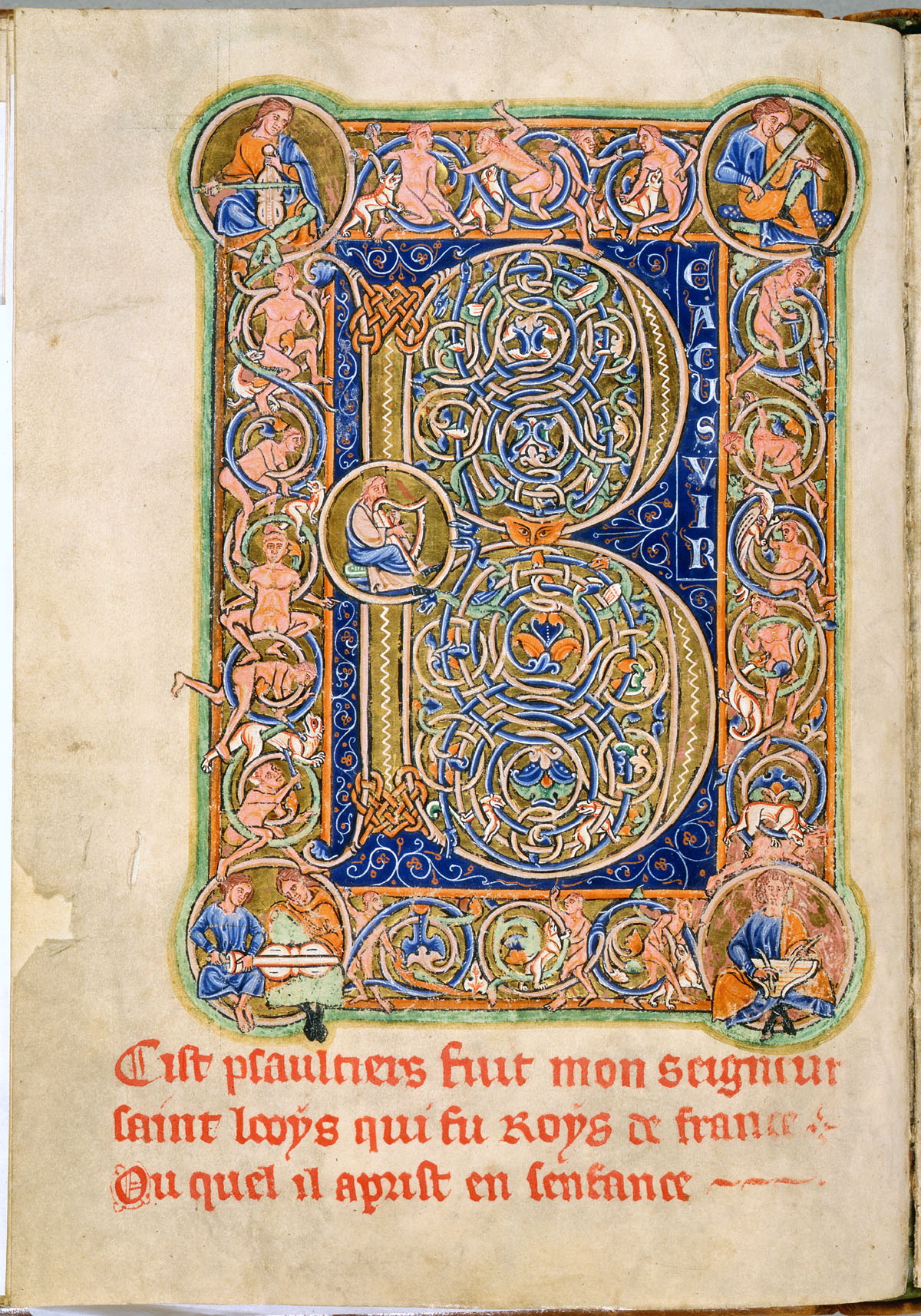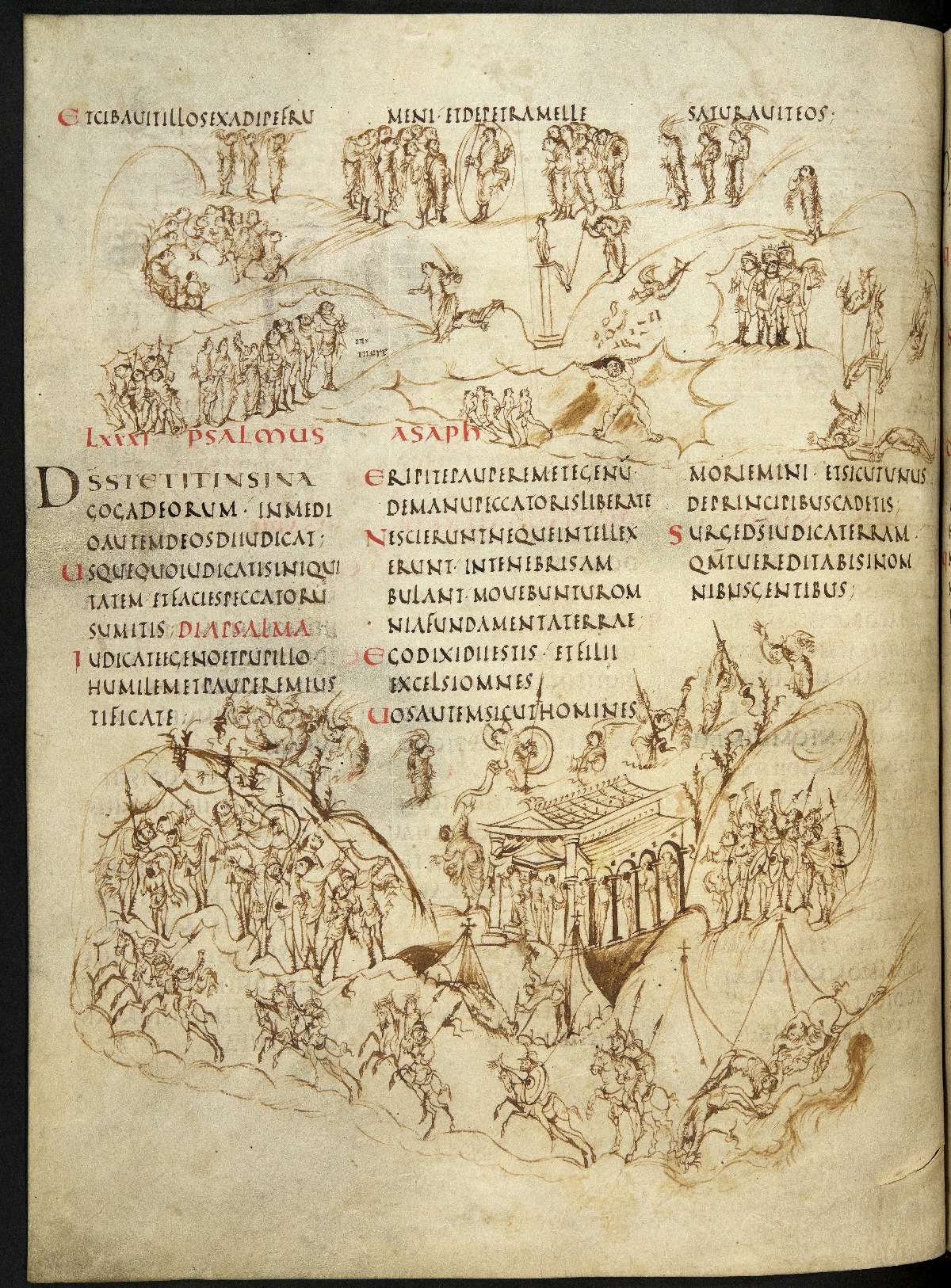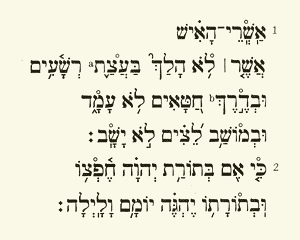|
Psalter
A psalter is a volume containing the Book of Psalms, often with other devotional material bound in as well, such as a liturgical calendar and litany of the Saints. Until the emergence of the book of hours in the Late Middle Ages, psalters were the books most widely owned by wealthy lay persons. They were commonly used for learning to read. Many Psalters were richly illuminated, and they include some of the most spectacular surviving examples of medieval book art. The English term ( Old English , ) derives from Church Latin. The source term is la, psalterium, which is simply the name of the Book of Psalms (in secular Latin, it is the term for a stringed instrument, from grc, ψαλτήριον ''psalterion''). The Book of Psalms contains the bulk of the Divine Office of the Roman Catholic Church. The other books associated with it were the Lectionary, the Antiphonary, and Responsoriale, and the Hymnary. In Late Modern English, ''psalter'' has mostly ceased to refer to ... [...More Info...] [...Related Items...] OR: [Wikipedia] [Google] [Baidu] |
Latin Psalters
The Latin Psalters are the translations of the Book of Psalms into the Latin language. They are the premier liturgical resource used in the Liturgy of the Hours of the Latin Rites of the Roman Catholic Church. These translations are typically placed in a separate volume or a section of the breviary called the psalter, in which the psalms are arranged to be prayed at the canonical hours of the day. In the Middle Ages, psalters were often lavish illuminated manuscripts, and in the Romanesque and early Gothic period were the type of book most often chosen to be richly illuminated. Versions The Latin Church has a diverse selection of more or less different full translations of the psalms. Three of these translations, the ''Romana'', ''Gallicana'', and ''juxta Hebraicum'', have been traditionally ascribed to Jerome, the author of the Latin Vulgate; however, the ''Romana'' has not been produced by Jerome. Two other translations, the Pian and Nova Vulgata versions, were made in the 2 ... [...More Info...] [...Related Items...] OR: [Wikipedia] [Google] [Baidu] |
Utrecht Psalter
The Utrecht Psalter (Utrecht, Universiteitsbibliotheek, MS Bibl. Rhenotraiectinae I Nr 32.) is a ninth-century illuminated psalter which is a key masterpiece of Carolingian art; it is probably the most valuable manuscript in the Netherlands. It is famous for its 166 lively pen illustrations, with one accompanying each psalm and the other texts in the manuscript (Chazelle, 1055). The precise purpose of these illustrations, and the extent of their dependence on earlier models, have been matters of art-historical controversy. The psalter spent the period between about 1000 to 1640 in England, where it had a profound influence on Anglo-Saxon art, giving rise to what is known as the "Utrecht style". It was copied at least three times in the Middle Ages. A complete facsimile edition of the psalter was made in 1875 (Lowe, 237), and another in 1984 (Graz). The other texts in the book include some canticles and hymns used in the office of the hours, including various canticles, the Te D ... [...More Info...] [...Related Items...] OR: [Wikipedia] [Google] [Baidu] |
Book Of Psalms
The Book of Psalms ( or ; he, תְּהִלִּים, , lit. "praises"), also known as the Psalms, or the Psalter, is the first book of the ("Writings"), the third section of the Tanakh, and a book of the Old Testament. The title is derived from the Greek translation, (), meaning "instrumental music" and, by extension, "the words accompanying the music". The book is an anthology of individual Hebrew religious hymns, with 150 in the Jewish and Western Christian tradition and more in the Eastern Christian churches. Many are linked to the name of David, but modern mainstream scholarship rejects his authorship, instead attributing the composition of the psalms to various authors writing between the 9th and 5th centuries BC. In the Quran, the Arabic word ‘Zabur’ is used for the Psalms of David in the Hebrew Bible. Structure Benedictions The Book of Psalms is divided into five sections, each closing with a doxology (i.e., a benediction). These divisions were probably intro ... [...More Info...] [...Related Items...] OR: [Wikipedia] [Google] [Baidu] |
Liturgy Of The Hours
The Liturgy of the Hours (Latin: ''Liturgia Horarum'') or Divine Office (Latin: ''Officium Divinum'') or ''Opus Dei'' ("Work of God") are a set of Catholic Church, Catholic prayers comprising the canonical hours, often also referred to as the breviary, of the Latin Church. The Liturgy of the Hours forms the official set of prayers "marking the hours of each day and sanctifying the day with prayer." The term "Liturgy of the Hours" has been retroactively applied to the practices of saying the canonical hours in both the Eastern Christianity, Christian East and Western Christianity, West–particularly within the Latin liturgical rites–prior to the Second Vatican Council, and is the official term for the canonical hours promulgated for usage by the Latin Church in 1971. Before 1971, the official form for the Latin Church was the ''Roman Breviary, Breviarium Romanum'', first published in 1568 with major editions through 1962. The Liturgy of the Hours, like many other forms of the c ... [...More Info...] [...Related Items...] OR: [Wikipedia] [Google] [Baidu] |
Psalm 1
Psalm 1 is the first psalm of the Book of Psalms, beginning in the English King James Version: "Blessed is the man", and forming "an appropriate prologue" to the whole collection.Kirkpatrick, A. F. (1906)Cambridge Bible for Schools and Collegeson Psalm 1, accessed 11 September 2021 The Book of Psalms is part of the third section of the Hebrew Bible, and a book of the Christian Old Testament. In Latin, this psalm is known as Beatus vir or ''Beatus vir, qui non abiit''.Church of EnglandBook of Common Prayer: The Psalteras printed by John Baskerville in 1762 The psalm is a regular part of Jewish, Catholic, Lutheran, Anglican, and other Protestant liturgies. Text Hebrew Bible version Following is the Hebrew text of Psalm 1: King James Version # Blessed is the man that walketh not in the counsel of the ungodly, nor standeth in the way of sinners, nor sitteth in the seat of the scornful. # But his delight is in the law of the ; and in his law doth he meditate day and night ... [...More Info...] [...Related Items...] OR: [Wikipedia] [Google] [Baidu] |
Beatus Initial
Beatus vir (; "Blessed is the man...") are the first words in the Latin Vulgate Bible of both Psalm 1 and Psalm 112 (in the general modern numbering; it is Psalm 111 in the Greek Septuagint and the Vulgate). In each case, the words are used to refer to frequent and significant uses of these psalms in art, although the two psalms are prominent in different fields, art in the case of Psalm 1 and music in the case of Psalm 112. In psalter manuscripts, the initial letter B of Beatus is often rendered prominently as a Beatus initial. Altogether the phrase occurs 14 times in the Vulgate text, eight times in the Book of Psalms, and four times in the rest of the Old Testament, but no uses in the New Testament. Psalm 1 in art Psalm 1 naturally begins the text of the Book of Psalms. In illuminated manuscript psalters this start was traditionally marked by a large Beatus initial for the B of Beatus, and the two opening words are often much larger than the rest of the text. Between ... [...More Info...] [...Related Items...] OR: [Wikipedia] [Google] [Baidu] |
Anglo-Saxon Art
Anglo-Saxon art covers art produced within the Anglo-Saxon period of English history, beginning with the Migration period style that the Anglo-Saxons brought with them from the continent in the 5th century, and ending in 1066 with the Norman Conquest of England, whose sophisticated art was influential in much of northern Europe. The two periods of outstanding achievement were the 7th and 8th centuries, with the metalwork and jewellery from Sutton Hoo and a series of magnificent illuminated manuscripts, and the final period after about 950, when there was a revival of English culture after the end of the Viking invasions. By the time of the Conquest the move to the Romanesque style is nearly complete. The important artistic centres, in so far as these can be established, were concentrated in the extremities of England, in Northumbria, especially in the early period, and Wessex and Kent near the south coast. Anglo-Saxon art survives mostly in illuminated manuscripts, Anglo-Sax ... [...More Info...] [...Related Items...] OR: [Wikipedia] [Google] [Baidu] |
Antiphonary
An antiphonary or antiphonal is one of the liturgical books intended for use (i.e. in the liturgical choir), and originally characterized, as its name implies, by the assignment to it principally of the antiphons used in various parts of the Latin liturgical rites. Medieval antiphonaries varied with regional liturgical tradition. In 1570, following the Council of Trent, the Roman Rite antiphonary was declared universal. The Roman Antiphonary (''Antiphonale Romanum'') contains the chants for the canonical hours for the hours of Lauds, Prime, Terce, Sext, None, Vespers and Compline for every day of the year. The ''Vesperale Romanum'' is an excerpt of the Antiphonary containing the chants sung at Vespers. The music for use at the Mass is contained in the Roman Gradual (''Graduale Romanum''), the chants of the ordinary are also edited as an excerpt from the Gradual, the ''Kyriale Romanum''. The ''Antiphonale Romanum'' was substantially revised in 1910–11 in the course of th ... [...More Info...] [...Related Items...] OR: [Wikipedia] [Google] [Baidu] |
Book Of Hours
The book of hours is a Christian devotional book used to pray the canonical hours. The use of a book of hours was especially popular in the Middle Ages and as a result, they are the most common type of surviving medieval illuminated manuscript. Like every manuscript, each manuscript book of hours is unique in one way or another, but most contain a similar collection of texts, prayers and psalms, often with appropriate decorations, for Christian devotion. Illumination or decoration is minimal in many examples, often restricted to decorated capital letters at the start of psalms and other prayers, but books made for wealthy patrons may be extremely lavish, with full-page miniatures. These illustrations would combine picturesque scenes of country life with sacred images. Books of hours were usually written in Latin (the Latin name for them is ''horae''), although there are many entirely or partially written in vernacular European languages, especially Dutch. The closely relat ... [...More Info...] [...Related Items...] OR: [Wikipedia] [Google] [Baidu] |
Canticle
A canticle (from the Latin ''canticulum'', a diminutive of ''canticum'', "song") is a hymn, psalm or other Christian song of praise with lyrics usually taken from biblical or holy texts. Canticles are used in Christian liturgy. Catholic Church Prior to the Pope Pius X's 1911 reforms, a single cycle of seven canticles was used at Lauds: * Sunday – The Song of the Three Holy Children () * Monday – The Song of Isaiah the Prophet () * Tuesday – The Song of Hezekiah () * Wednesday – The Song of Hannah () * Thursday – The (First) Song of Moses () * Friday – The Prayer of Habakkuk () * Saturday – The (Second) Song of Moses () These canticles are rather long, and the weekday ones display something of a penitential theme, but some were not often used, as all feasts, and weekdays in Eastertide used the Canticle of Daniel, the Sunday canticle. The 1911 reform introduced for weekdays not of penitential nature, and for lesser feasts and days of the lesser octaves, the follow ... [...More Info...] [...Related Items...] OR: [Wikipedia] [Google] [Baidu] |
Illuminated Manuscript
An illuminated manuscript is a formally prepared document where the text is often supplemented with flourishes such as borders and miniature illustrations. Often used in the Roman Catholic Church for prayers, liturgical services and psalms, the practice continued into secular texts from the 13th century onward and typically include proclamations, enrolled bills, laws, charters, inventories and deeds. While Islamic manuscripts can also be called illuminated, and use essentially the same techniques, comparable Far Eastern and Mesoamerican works are described as ''painted''. The earliest illuminated manuscripts in existence come from the Kingdom of the Ostrogoths and the Eastern Roman Empire and date from between 400 and 600 CE. Examples include the Codex Argenteus and the Rossano Gospels, both of which are from the 6th century. The majority of extant manuscripts are from the Middle Ages, although many survive from the Renaissance, along with a very limited number from Late ... [...More Info...] [...Related Items...] OR: [Wikipedia] [Google] [Baidu] |
Church Latin
Latin, also called Church Latin or Liturgical Latin, is a form of Latin developed to discuss Christian thought in Late Antiquity and used in Christian liturgy, theology, and church administration down to the present day, especially in the Catholic Church. It includes words from Vulgar Latin and Classical Latin (as well as Greek and Hebrew) re-purposed with Christian meaning. It is less stylized and rigid in form than Classical Latin, sharing vocabulary, forms, and syntax, while at the same time incorporating informal elements which had always been with the language but which were excluded by the literary authors of Classical Latin. Its pronunciation was partly standardized in the late 8th century during the Carolingian Renaissance as part of Charlemagne's educational reforms, and this new letter-by-letter pronunciation, used in France and England, was adopted in Iberia and Italy a couple of centuries afterwards. As time passed, pronunciation diverged depending on the local vern ... [...More Info...] [...Related Items...] OR: [Wikipedia] [Google] [Baidu] |










.jpg)